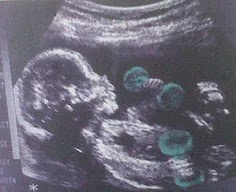According to a new national guidelines for stroke,
rehabilitation plays an important role in recovery. It highlights that the frequency of therapy must enable stroke
patients to meet their rehabilitation goals and therapy should continue as long
as patients are willing and capable of participating and showing measurable
benefit from treatment.
The
National Clinical Guideline for Stroke pays attention into an early
mobilisation. Those who are medically stable but with difficulties to move soon
after a stroke should be offered frequent, short, daily mobilisations (45 min)
and it should start between 24 and 48 hours after a stroke.
A stroke
unit must be capable of providing rehabilitation to all its patients, providing
a specialist early supported discharge service, so stroke patients can continue
their rehabilitation at home.
Commissioners
are recommended to look for specialist rehabilitation services which meet the
specific health, social and vocational needs of people with stroke of all ages.
And they should commission services capable of delivering specialist
rehabilitation in out-patient and community settings, in liaison with inpatient
services.
Why
earlier, more frequent, and higher dose of out-of-bed sitting, standing, and
walking activities are consider to be more effective than previously thought?
The
research ‘Efficacy and safety of very early mobilisation within 24 h of stroke
onset (AVERT): a randomised controlled trial’ answers to above question very
well. It says that the very early mobilisation intervention significantly
reduced the odds of a favourable outcome 3 months after stroke compared with
lower dose usual care starting, on average, 5 h later.
The
biological rationale underlying the potential for early out-of-bed training centres
around three arguments: (1) that bed rest negatively affects the
musculoskeletal, cardiovascular, respiratory, and immune systems, and
might slow recovery; (2) that immobility-related complications are common early
after stroke at a time when patients are very inactive; and (3) that there
might be a narrow window of opportunity for brain plasticity and repair, and
the optimum period for change could be early after stroke. Prompt start and
more episodes of out-of-bed activity might therefore improve outcome.
|
Early
Physiotherapy in intensive care
|
Positioning
|
·
to reduce
skin damage, limb swelling, shoulder pain or subluxation, and discomfort,
·
to
maximise function
·
to
maintain soft tissue length.
·
to
reduce respiratory complications
·
avoid
compromising hydration and nutrition.
Recommendations
|
|
Early mobilisation
|
·
significantly reduced the odds of a
favourable outcome 3 months after stroke compared with lower dose usual care
starting, on average, 5 h later.
Recommendations
|
Resources:
http://www.actaneurologica.be/pdfs/2002-2/03-desfontaines-laloux.pdfhttps://www.nice.org.uk/guidance/cg162






No comments:
Post a Comment